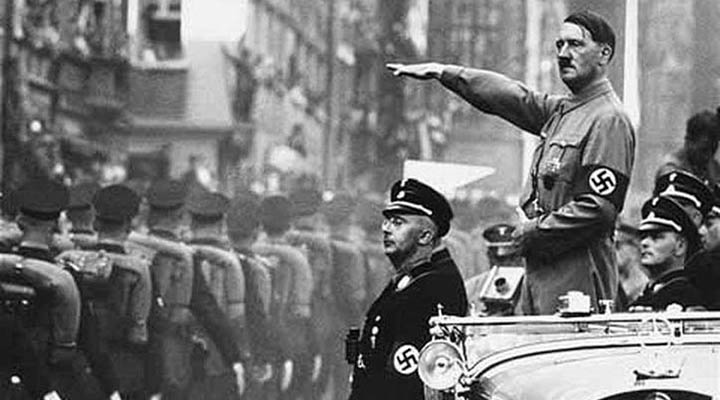ADVERTS
End of the First World War and Nazism
In 1918, with the end of the First World War, Germany, then defeated, was going through a deep crisis.
In order to get out of the war and maintain what was left of his army, he signed a peace agreement called the “Treaty of Versailles”. It held Germany responsible for the First War, prohibited the country from manufacturing weapons, tanks and planes; it forced the return of conquered territories and the reduction of the German army, in addition to demanding the payment of compensation to the victorious countries for war damages.
ADVERTS
The population ended up feeling humiliated by these impositions, which ended up generating a climate of revolt.
At the end of the war, the monarchical regime of the Kaiser (emperor) fell and the “Weimar Republic” began.
Russia, in 1917, led by the socialist Lenin, overthrew the government of Tsar Nicholas II and established a communist government.
ADVERTS
Countries that based their economies on capitalism and the exploitation of workers felt threatened. Thus, many anti-democratic movements emerged in the world, with the aim of containing the growth of communism.
In Italy fascism predominated; in Portugal, Salazarism; in Spain, Francoism; and in Germany, Nazism.

How Nazism came about
Nazism comes from Nazi, an abbreviation for the National Socialist German Workers' Party. It had nothing socialist and as a symbol it used the “swastika” (a cross found in several tribes).
Its leader was Adolf Hitler, born on April 20, 1889.
In 1923, Hitler, outraged by the terrible conditions the Germans faced as a result of their defeat in the war, attempted a coup d'état in a beer hall in Germany. Unsuccessful, he was taken into custody. In prison, he wrote the book “Mein Kampf” (My Struggle), which later became a primer for Nazism.
In the same, he defends the hegemony of the Aryan race, claiming that Germany would only rise again when the people were united “in one people, in one empire, in one leader”. Other ethnicities, including Jews and blacks, should be extinguished. He did not like Jews, as he believed that the First World War was disastrous due to the betrayal of Marxist Jews.
In addition to hatred against other ethnicities, he also advocated the extermination of Jehovah's witnesses, homosexuals and communists.
The Assault Sections (SA), the Security Sections (SS) and the Gestapo (secret police) were created to carry out his orders.
In this way, the Germans saw in Hitler a kind of salvation for the country's crisis. Thus the party grew, made up of farmers, young people, soldiers, and all classes.
Then-president Hindenburg, frightened by the party's growth, offered the position of chancellor to Hitler. Soon, he instituted a policy of reprimand against communists. These were imprisoned in concentration camps and then executed.
In August 1934, President Hindenburg died and Hitler assumed the top position, without giving up his position as chancellor.
He created the Third Reich (empire) and proclaimed himself Führer (leader). As a dictator, he led the execution of thousands of Jews, communists, homosexuals, blacks and others in concentration camps. This historical moment became known as the “Holocaust”.
One name that appears in the history of Nazism is Joseph Goebbels, a skillful orator, filmmaker and agitator. He was appointed minister of Nazi propaganda. He censored the press and made films that alienated the population, with promises of a better world, with Aryan supremacy. He controlled radio, television and newspapers, releasing films and pamphlet speeches in favor of Nazism.
In 1939, with the beginning of the Second World War, Hitler sent all German troops. After being defeated numerous times, the German army in June 1941 invaded the Soviet Union. Despite the first victories, Hitler did not count on the harsh winter and his troops were surprised by Russian troops. With a lack of food, water and facing the cold, the German army was defeated. Hitler was surrounded by the Red Army in his bunker (military hideout) and committed suicide by shooting himself in the head.
